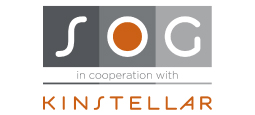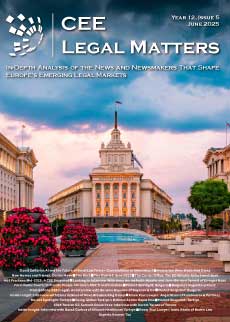Although I am a bit old to claim that my generation has two birthdays – a natural one and an Internet one – I believe, for that same reason, that we have the experience to assess progress in respect of ongoing digitalization trends.
Information and communications technology has made a significant impact on the lives of people around the world. Positive changes have been felt in almost all aspects of our daily routines, but none have been felt so significantly as the structural changes of modern business and commercial transactions.
In Serbia, digitalization has been most significantly noticed in the area of eCommerce. It has been estimated that there are more than 2.9 million eCommerce users in Serbia. Current parameters and trends lead to the prediction that the number of users will be up to 3.9 million by 2021, which would represent almost 70% of Serbia’s population.
Even certain world-class clothing brands are considering completely abolishing their retail shops and becoming e-vailable online. This might have seemed somewhat extreme several years ago, but now it makes perfect sense. The Internet will certainly become only faster and more widely-spread, and with online shops there are almost no labor fees, no leases, no utility bills, etc. It really is cost-cutting at its finest.
Due to the immense flow of online trade, the government of Serbia had to learn, adapt, and adopt legislation in order to set up the legal framework for eCommerce. The first piece of legislation has been in force since the end of the last decade and it is now undergoing a mid-age overhaul, with new amendments expected to enter into force during the next couple of months.
The main subject of this overhaul will be the introduction of generally standard institutes in EU eCommerce – an alternative dispute resolution mechanism, an “e-Trustmark” and the “mystery shopper.”
The ADR mechanism essentially represents mediation proceedings held online before a market professional or a licensed mediator. Its main characteristics are flexibility, efficiency, and general informality, which are better suited to a wide consumer base.
The “e-Trustmark” enables professional traders to distinguish themselves on the market as licensed professional traders. Mystery shoppers on the other hand are market inspectors authorized to act as online shoppers for the purpose of discovering any infractions by the traders.
Apart from these institutes there are also two new technologies – blockchain and smart contracts – the regulation of which is being considered under the new amendments. Blockchain and smart contracts are already considered the backbone of the new digital revolution and it is my personal belief that the adoption of blockchain-friendly policies could turn Serbia into a global FinTech hub.
Although practical implementation of blockchain is in its early stages, its development is often compared to the early days of the Internet. Blockchain can be used in many ways, including facilitating trade finance, securities recordkeeping and governance, consumer banking, etc. The demand for blockchain technology has created thousands of jobs, with IBM reporting that it increased the number of employees focused on blockchain projects from 400 to 1,500 in the span of a year. TechCrunch estimates that venture capital funds and other private investors invested USD 1.3 billion between January and May of 2018 into “blockchain and blockchain adjacent” early stage companies.
Smart contracts, on the other hand, have come a long way in a short time. They help realize the many possibilities of blockchain and distributed ledger technology (DLT) in general. The certainty of the outcome, automation of performance, and efficiencies in the streamlining of processes are reasons enough for smart contracts to be fundamental to the uptake of DLT. Their potential is now being actively considered and developed in sectors as diverse as financial services, life sciences, and telecommunications.
However, there are still many open legal issues: When can a smart contract be a legally binding contract? Can it transfer assets or perfect a transfer of title to them? These are just some of the questions of fundamental importance and the manner of their regulation will affect the pace and the extent to which smart contracts will be deployed, beyond a role confined to self-executing, automating code.
But if history has taught us anything, it is that eventually laws adapt to progress and not the other way around. Progress is inevitable – the question is just who will be the first to understand its nature and its direction. Ironically, digital progress comes from the most fundamental part of nature – evolution – and evolution is merciless to the unprepared and unwilling. Forget winter. Digitalization is coming.
By Milan Samardzic, Partner, SOG / Samardzic, Oreski & Grbovic
This Article was originally published in Issue 6.4 of the CEE Legal Matters Magazine. If you would like to receive a hard copy of the magazine, you can subscribe here.




